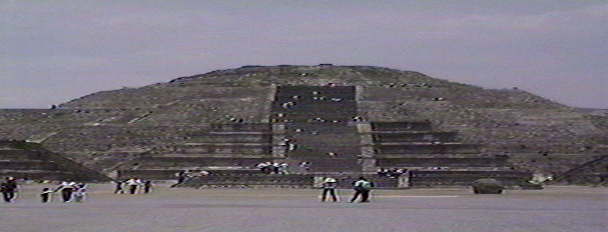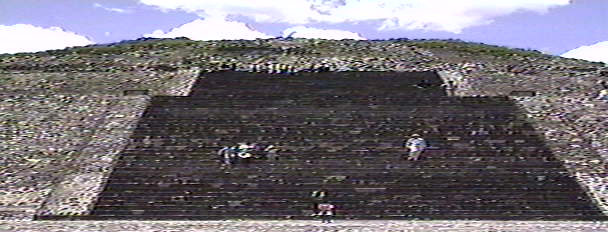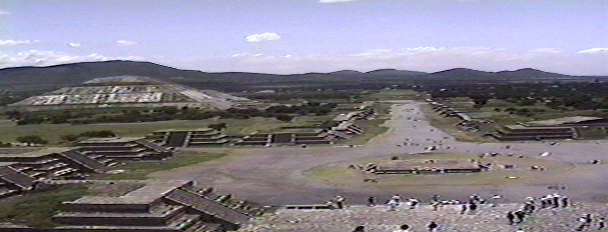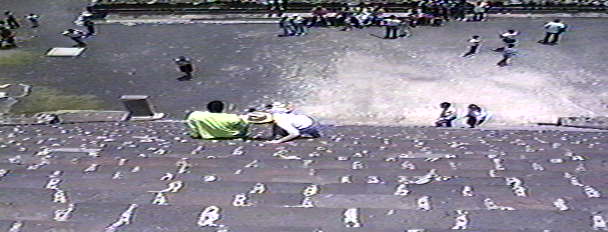|
|

The ruins of Teotihuacan are dominated by two great pyramids. The smaller of the two, at the northern end of the archaeological site is known as the Pyramid of the Moon. Unlike the pyramids of Egypt, the primary function of the Mexican pyramids was not as tombs. They served as enormous platforms to elevate the temples closer to the heavens.

Looking up the steps of the Pyramid of the Moon. The pyramid has only been partially restored, and it is not possible to climb to the very top.

From part way up the Pyramid of the Moon there is an excellent view. We see the Avenue of the Dead, the principal street which ran the entire length of the city, and the Pyramid of the Sun, the larger of Teotihuacan's two great pyramids.

Looking down the steps of the Pyramid of the Moon. The steps of Mexican pyramids tend to be quite steep, making the ascent quite tiring and the descent a bit scary.